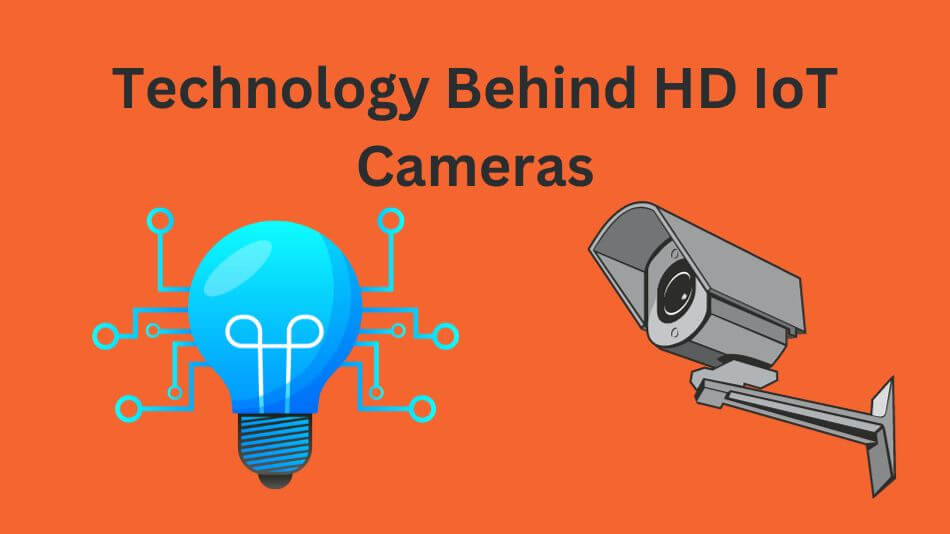Introduction

At a time of increased connectivity and automation, HD cameras combined with IoT have brought about unprecedented innovations.
Dubbed smart cameras, HD IoT cameras have revolutionized surveillance across different sectors. In this complete guide, we will explore the capabilities, applications, and significance of HD-IoT cameras in today’s digital landscape.
Understanding HD IoT Cameras
HD IoT cameras are a subset of IoT devices equipped with HD cameras that capture and transmit high-definition videos and images over the Internet. As part of an ecosystem designed to enable seamless communication between devices and users, these HD cameras play an integral part in the IoT ecosystem.
The Technology Behind HD IoT Cameras
How Do HD IoT Cameras Work?

HD IoT cameras use advanced image sensors and processors to capture and process high-definition video. They are typically connected to a local network or the cloud, allowing users to access live feeds remotely. These cameras often employ motion detection, facial recognition, and night vision technologies to enhance their functionality.
Benefits of HD Resolution

The high-definition resolution of these cameras provides clear and detailed images, making them ideal for security and surveillance applications. HD-IoT cameras can capture essential details, such as license plate numbers or facial features, even in low-light conditions.
Applications of HD IoT Cameras
Security and Surveillance
One of the primary applications of HD IoT cameras is in security and surveillance. These cameras offer real-time monitoring of homes, businesses, and public spaces, enhancing safety and providing valuable evidence in case of incidents.
Home Automation
HD-IoT cameras are integral components of smart homes, enabling homeowners to monitor their property remotely. They can be integrated with smart locks, alarms, and lighting systems to create a comprehensive home automation ecosystem.
Industrial Monitoring
Industries rely on HD-IoT cameras for monitoring manufacturing processes, ensuring employee safety, and safeguarding valuable assets. These cameras are also used in environmental monitoring and quality control.
Features and Capabilities
Remote Monitoring
One of the standout features of HD IoT cameras is remote monitoring. Users can access live video feeds from their cameras through mobile apps or web interfaces, providing real-time insights from anywhere with an internet connection.
Motion Detection and Alerts
HD IoT cameras often come equipped with motion detection technology. When motion is detected, the camera can send alerts to the user’s smartphone or email, allowing for quick response to potential security breaches.
Two-Way Audio Many
HD IoT cameras feature two-way audio capabilities, enabling users to communicate with individuals near the camera. This feature is useful for home security, video intercoms, and remote assistance.
Integration with Smart Devices
HD-IoT cameras can be integrated with other smart devices in a home or business, creating a cohesive and automated environment. They can work in tandem with smart hubs, voice assistants, and security systems.
Selecting the Right HD IoT Camera
Key Considerations
When choosing an HD IoT camera, consider factors such as resolution, field of view, connectivity options, and compatibility with existing devices. Evaluate whether cloud-based or local storage suits your needs.
Top HD IoT Camera Brands
Some renowned brands in the HD IoT camera market include Nest, Arlo, Ring, and Wyze. Research these options to find the best fit for your requirements.
Installation and Setup
DIY Installation Guide HD-IoT cameras are often designed for easy DIY installation. Follow the manufacturer’s instructions to set up your camera, connect it to your network, and configure the necessary settings.
FAQs (Frequently Asked Questions)

How secure are HD IoT cameras?
HD IoT cameras employ encryption and authentication protocols to ensure data security. However, it’s essential to follow best practices, such as regular firmware updates and strong passwords, to enhance security further.
What is the difference between HD and 4K IoT cameras?
The primary difference is resolution. HD cameras offer 720p or 1080p resolution, while 4K cameras provide ultra-high-definition (UHD) resolution. 4K cameras capture more detail but require higher bandwidth and storage.
Can I access my HD IoT camera remotely?
Yes, most HD IoT cameras offer remote access through dedicated mobile apps or web portals. This allows you to check live feeds and receive alerts from anywhere.
Do HD IoT cameras require a constant internet connection?
While HD-IoT cameras require an internet connection for remote access, some models offer local storage options that can function without continuous internet access.
How can I ensure the privacy of my HD IoT camera feed?
To protect your privacy, change default passwords, enable encryption, and regularly update firmware. Additionally, use secure networks and limit access to authorized users.
Conclusion: Embracing the Future of Surveillance

HD IoT cameras have redefined the way we approach surveillance, security, and automation.
With their high-definition capabilities, remote access, and integration potential, they are a valuable addition to both residential and industrial settings.
As technology continues to evolve, HD IoT cameras will play a pivotal role in shaping the future of connected living and monitoring.
In conclusion, HD-IoT cameras offer a glimpse into the possibilities of the digital age, where security, convenience, and efficiency converge.
Embrace this transformative technology to safeguard your world, enhance your daily life, and stay connected in a rapidly evolving digital landscape.
